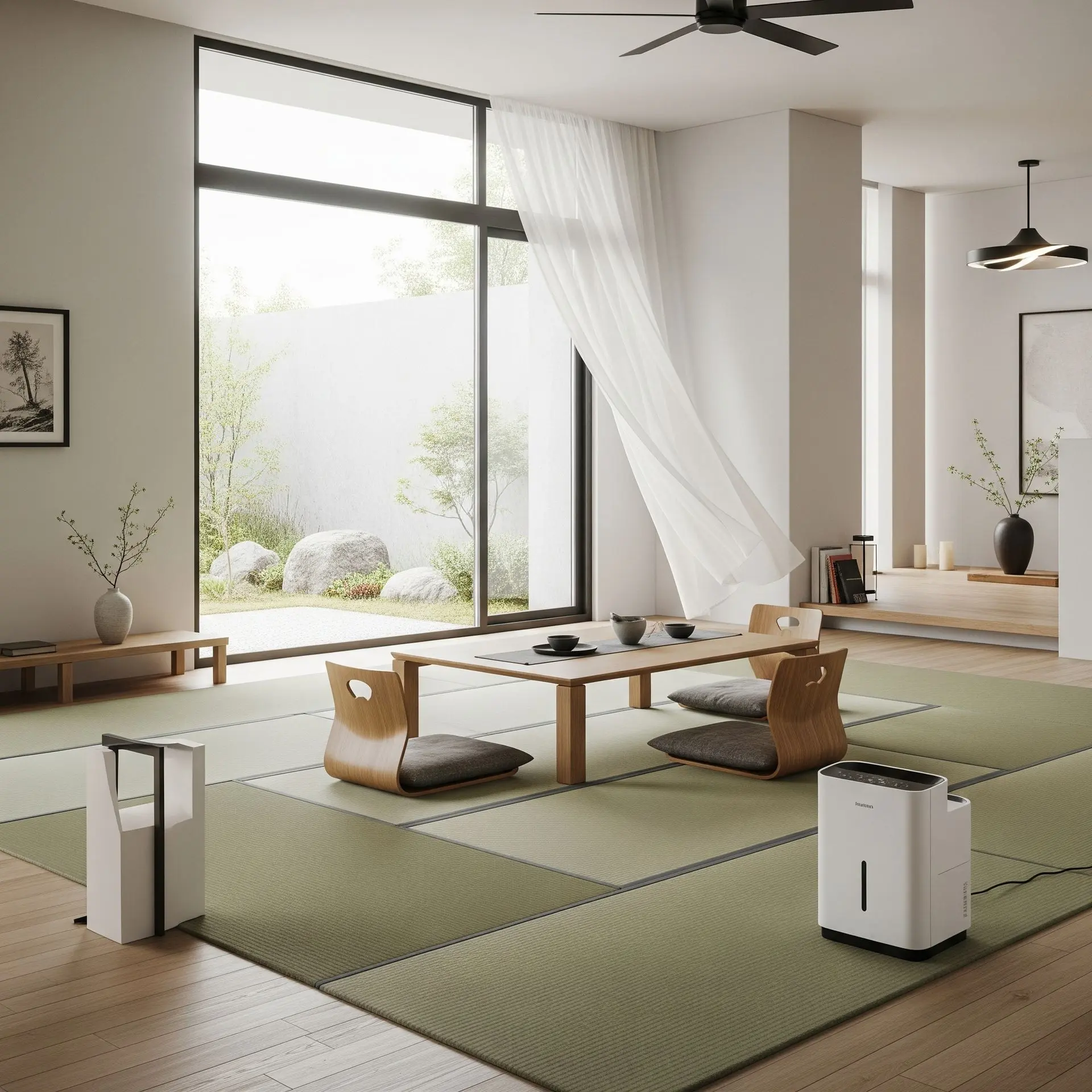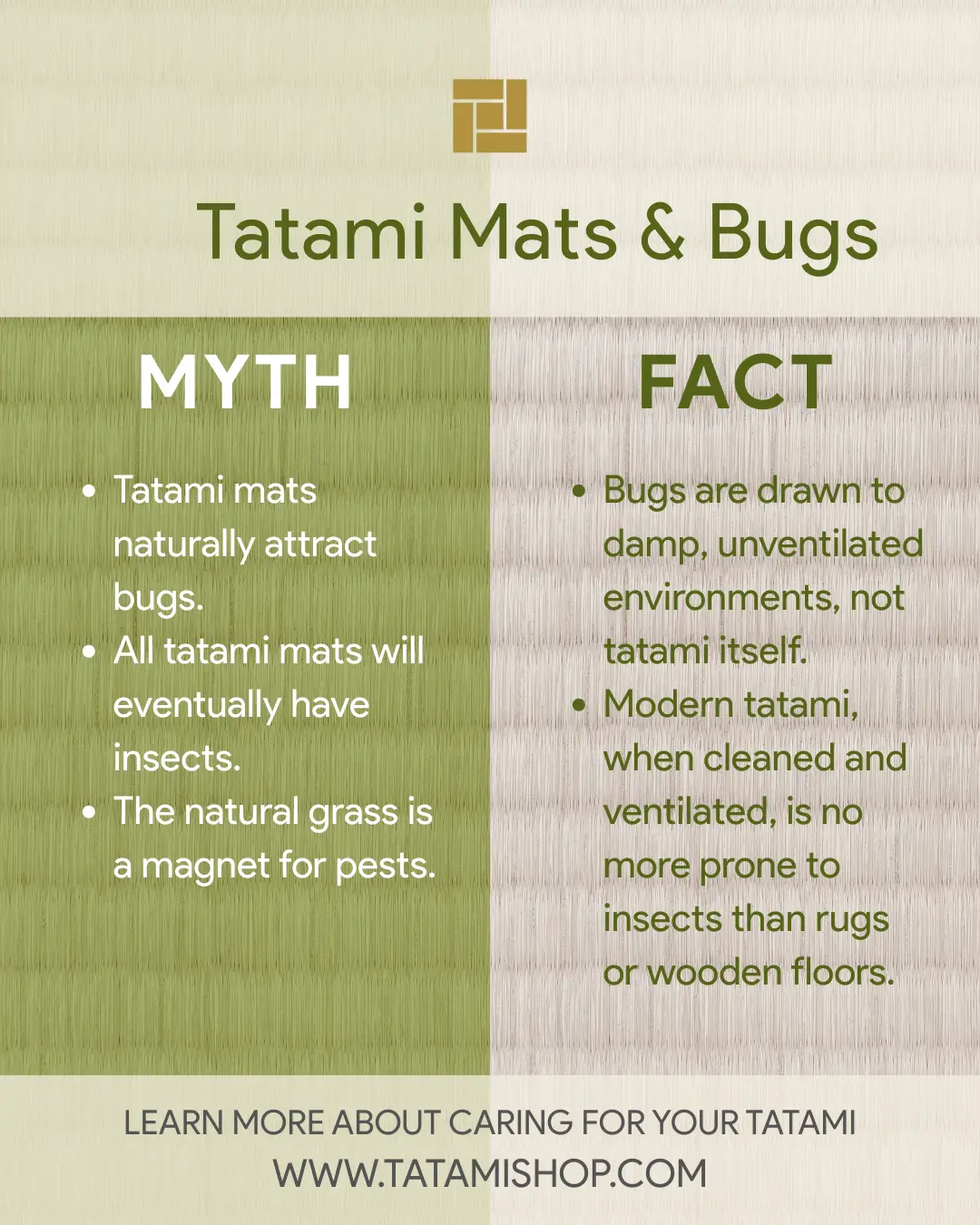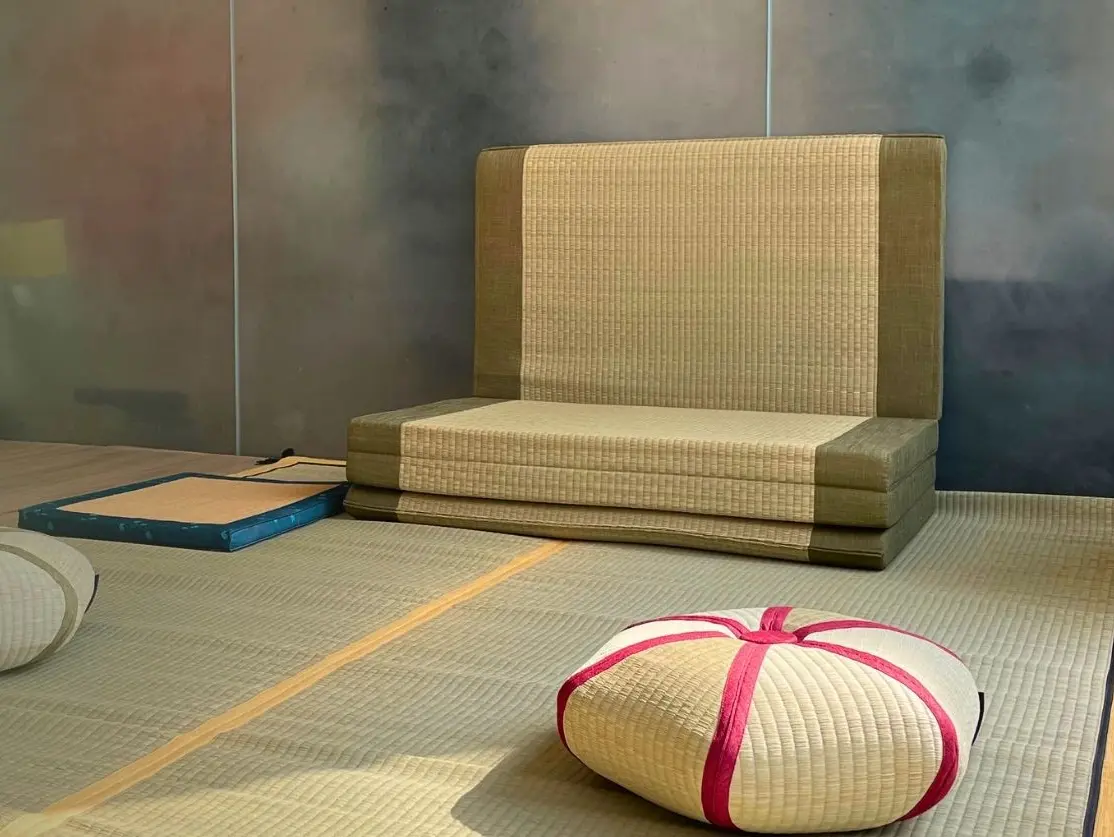Tatami mats, with their natural beauty and cultural heritage, often raise a common concern for potential buyers: Do they attract bugs? This question stems from the fact that tatami mats are traditionally made from natural materials, such as igusa (rush grass), which might seem appealing to insects. However, the reality is more nuanced. Let’s explore where the myth comes from, what’s true, and how proper care ensures your tatami remains fresh and bug-free.
The Origin of the Bug Myth
Historically, in Japan’s humid climate, older tatami mats—especially those without proper ventilation or cleaning—could harbor insects such as mites. This was particularly true in homes without modern climate control or in mats that were rarely cleaned. Over time, these rare but memorable cases evolved into the persistent belief that tatami mats naturally attract bugs.
In reality, the presence of insects is far more related to environmental conditions and maintenance habits than to the mats themselves.
Fact: Tatami Mats Are No More Prone to Bugs Than Other Flooring
A new, well-maintained tatami mat is no more attractive to bugs than a wool rug or cotton upholstery. Modern tatami mats—especially those made with high-quality igusa and constructed to current standards—are naturally resistant to moderate wear and humidity when properly cared for.
The key difference lies in their natural composition: igusa fibers can absorb and release moisture, helping to regulate room humidity. While this is a benefit for comfort, it does mean that in persistently damp conditions without airflow, any natural fiber (tatami, wood, or fabric) could potentially become a habitat for pests.
The Role of Maintenance
The best way to keep tatami mats in excellent condition—and free from pests—is through consistent, mindful care:
- Vacuum along the grain – Gently remove dust and debris by moving the vacuum in the same direction as the weave to protect the fibers.
- Wipe with a dry or slightly damp cloth – Use a well-wrung cloth to lift surface dirt, avoiding excess water that could weaken the mat over time.
- Ensure good ventilation – Keep the room airy, especially during humid months. Natural airflow or a dehumidifier helps maintain the mat’s ideal moisture balance.
- Limit prolonged sunlight – Occasional sunlight can freshen tatami, but too much can cause fading and dryness.
With these simple habits, you can greatly reduce the chance of insects and enjoy a longer lifespan for your tatami mats.
Preventing Bugs Is About the Environment, Not the Mat
Bugs are drawn to environments that provide food, shelter, and moisture—not specifically to tatami mats. In fact, modern living spaces with climate control, regular cleaning, and good ventilation rarely see any insect problems related to tatami at all.
If you live in a high-humidity area, consider pairing tatami mats with regular room ventilation or a dehumidifier. This keeps the mats dry and inhospitable to pests while preserving their natural feel underfoot.

The Bottom Line
Tatami mats themselves do not “attract” bugs. The myth comes from older, poorly maintained mats in humid, unventilated conditions—not from the material itself. By following simple care routines from Tatami Shop, you can enjoy the comfort, style, and health benefits of tatami without worrying about unwanted guests.

